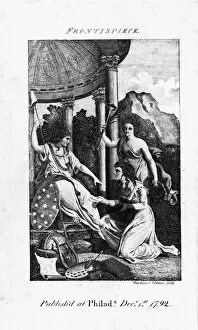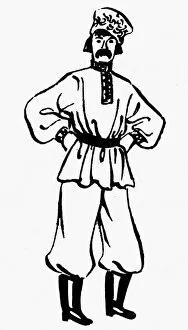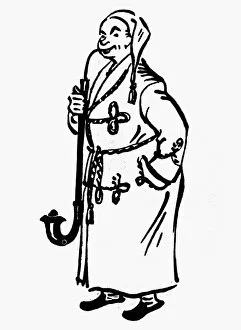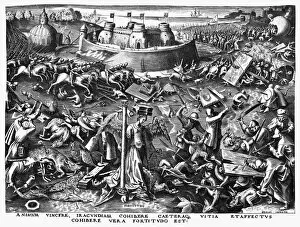Personification Collection (page 45)
Personification is a powerful artistic technique that breathes life into inanimate objects, concepts, and even nations
All Professionally Made to Order for Quick Shipping
Personification is a powerful artistic technique that breathes life into inanimate objects, concepts, and even nations. From the explosive brilliance of "A Star Explodes" by Norman Lindsay to the resilience embodied in "Long Live Estonia, " personification captivates our imagination. In an 1866 cartoon titled "Deaths Dispensary, " water pollution takes on a sinister form as it becomes the source of disease, reminding us of the consequences of environmental negligence. The Austro-Hungarian Empire proudly waves its flag while personified, symbolizing its strength and identity. Dressed in ancient Roman costume, we witness the embodiment of history itself. Guiseppe Heintz's 17th-century map of Venice transports us back in time to a city alive with stories waiting to be discovered. Lord have mercy on London. A contemporary English woodcut depicts the Great Plague of 1665 as death rides upon a pale horse, illustrating how they are evoke fear and urgency. Finland emerges as a vibrant character through "The Personification of Finland (Suomi), " representing national pride and unity. Gustave Doré's wood engraving portrays Death on his pale horse from Revelation 6:8, showcasing how personifying abstract ideas can make them tangible and relatable. During World War II, Edward T. Grigware's poster warns against careless talk with the phrase "Keep Mum - The World Has Ears. " This clever use reminds us that words hold power beyond measure. Lastly, Kiyochika Kobayashi's woodcut presents a thought-provoking image: a whale dining on Russian sailors while three fish symbolize Japan. Here we see how nations are given human-like qualities for political commentary or storytelling purposes. Through these diverse examples spanning centuries and cultures, we witness how artists employ personification to engage our emotions and provoke contemplation about complex issues such as pollution or war.
















































